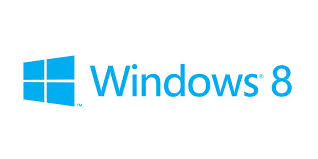Candidates taking the 70-687 Configuring Windows 8 exam must be knowledgeable in the following topics; install and upgrade to Windows 8, configure hardware and applications, configure network continuity, configure access to resources, configure remote access and mobility, monitor and maintain Windows clients, and configure backup and recovery options. Each of these topics will have sub tasks and objectives that candidates must be familiar with and they can learn about these by studying the exam guide on the Windows site. In order to acquire the needed knowledge it is recommended that candidates take the five day course; Configuring Windows 8. This course will greatly increase a candidate's chances of passing the exam. They should also make the Training Guide: Configuring Windows 8 part of their preparation.
Once candidates pass the exam the credit can be applied towards the Microsoft Certified Solutions Associate: Windows 8. This will get them into the positions of being a consultant, full-time desk support technician, or an IT generalist that administers Windows 8 based computers and devices as part of the technical responsibilities. There is a facts and questions section on the exam guide that can familiarize candidates with the testing formats, learn the most effective way to prepare, the time limit for the exam, the number of questions, and many other frequently asked questions.
Windows 8 is a personal
computer operating system developed by Microsoft as part of the Windows NT family of operating systems. Development of Windows 8 started before the release of its predecessor, Windows 7, in 2009. It was announced at CES 2011, and followed by the release of three pre-release versions from September 2011 to May 2012. The operating system was released to manufacturing on August 1, 2012, and was released for general availability on October 26, 2012.
Windows 8 introduced major changes to the operating system's platform and user interface to improve its user experience on tablets, where Windows was now competing with mobile operating systems, including Android and iOS. In particular, these changes included a touch-optimized Windows shell based on Microsoft's "Metro" design language, the Start screen (which displays programs and dynamically updated content on a grid of tiles), a new platform for developing apps with an emphasis on touchscreen input, integration with online services (including the ability to sync apps and settings between devices), and Windows Store, an online store for downloading and purchasing new software. Windows 8 added support for USB 3.0, Advanced Format hard drives, near field communications, and cloud computing.
Additional security features were introduced, such as built-in antivirus software, integration with Microsoft SmartScreen phishing filtering service and support for UEFI Secure Boot on supported devices with UEFI firmware, to prevent malware from infecting the boot process.
Windows 8 was released to a mixed reception. Although reaction towards its performance improvements, security enhancements, and improved support for touchscreen devices was positive, the new user interface of the operating system was widely criticized for being potentially confusing and difficult to learn (especially when used with a keyboard and mouse instead of a touchscreen). Despite these shortcomings, 60 million Windows 8 licenses have been sold through January 2013, a number which included both upgrades and sales to OEMs for new PCs.
On October 17, 2013, Microsoft released Windows 8.1. It addresses some aspects of Windows 8 that were criticized by reviewers and early adopters and incorporates additional improvements to various aspects of the operating system.
SYSTEM REQUIREMENTS
The minimum system requirements for Windows 8 are slightly higher than those of Windows 7. The CPU must support the Physical Address Extension (PAE), NX bit, and SSE2. Windows Store apps require a screen resolution of 1024×768 or higher to run; a resolution of 1366×768 or higher is required to use the snap functionality. To receive certification, Microsoft requires candidate x86 systems to resume from standby in 2 seconds or less.
